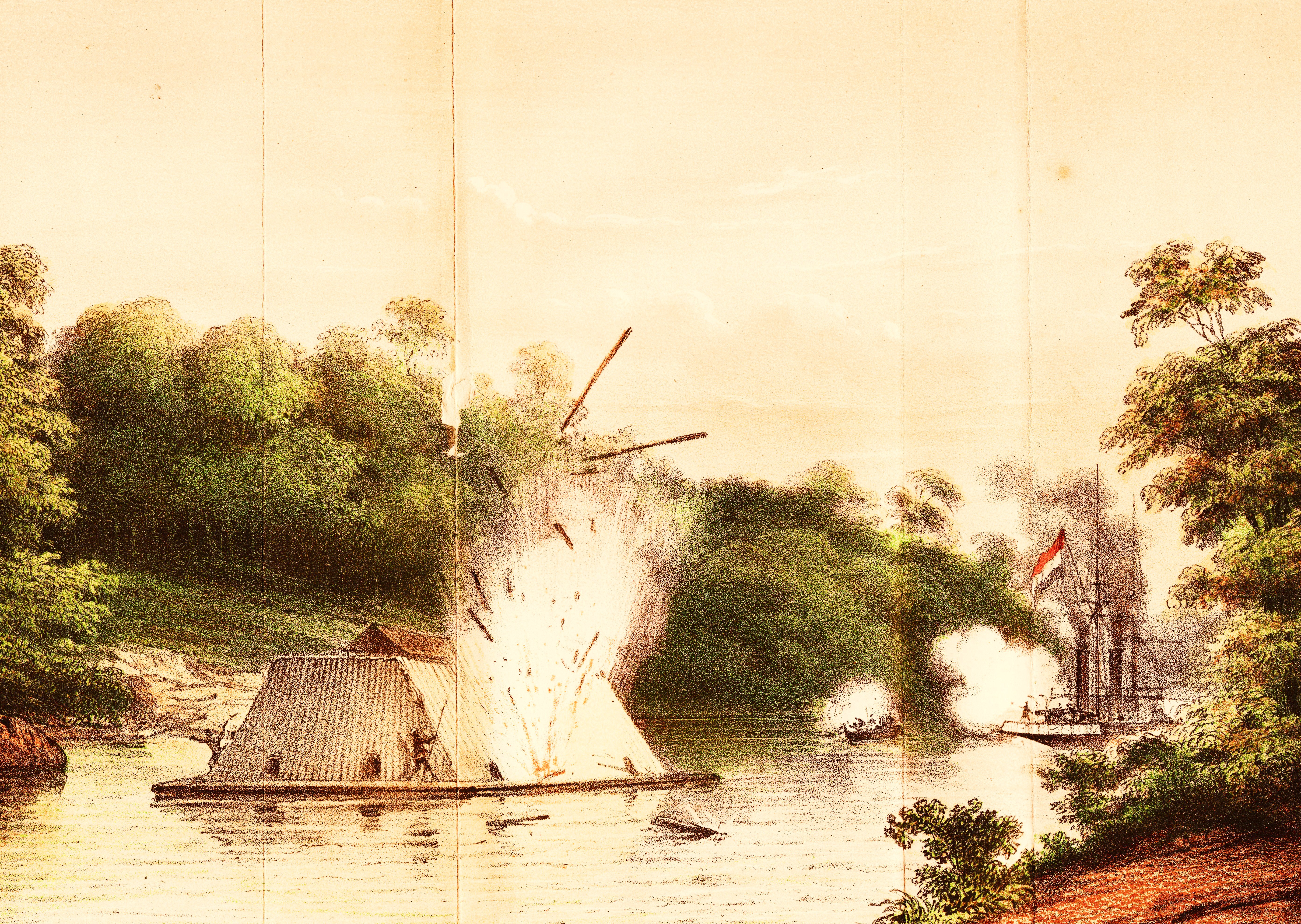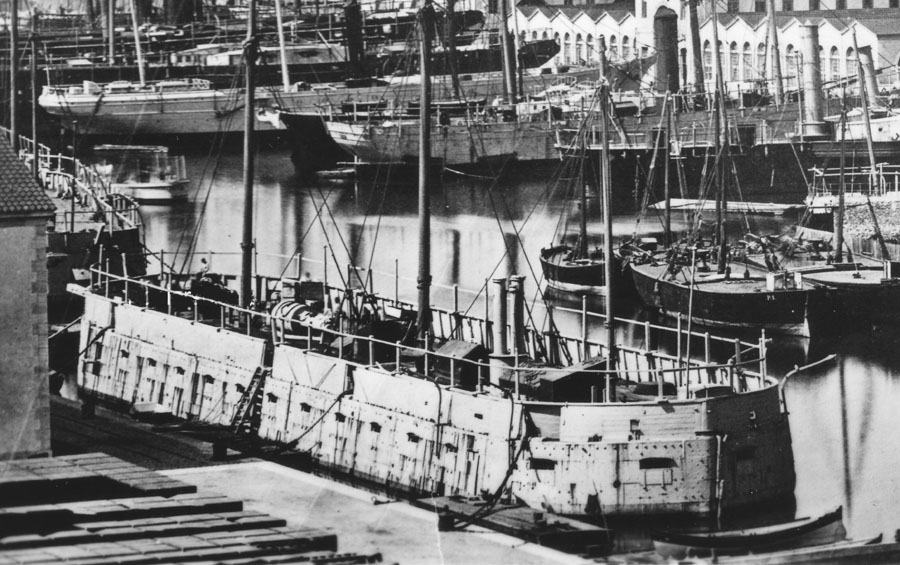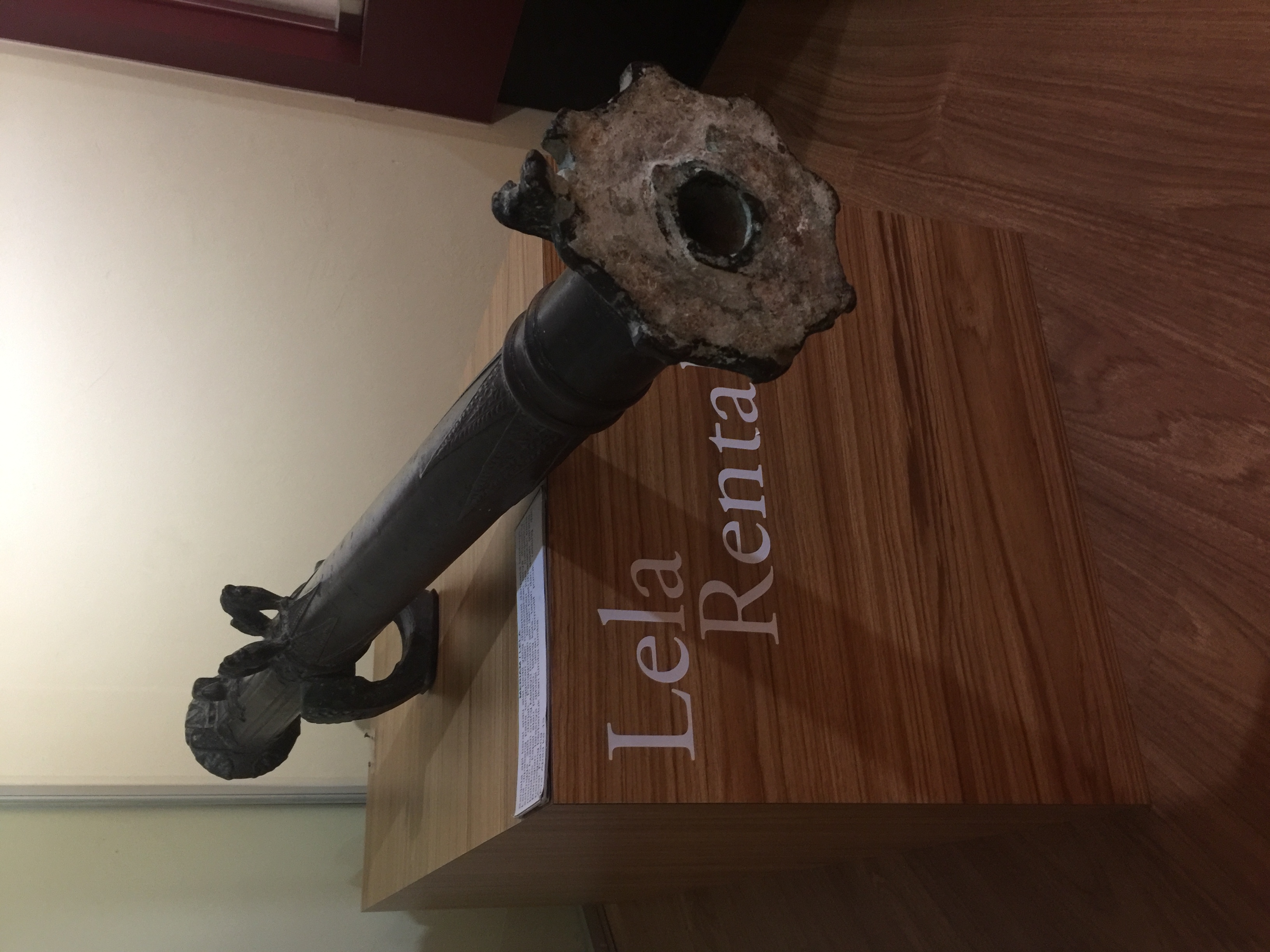|
Kotta Mara
Kotta mara is a type of floating battery or fortified raft from Borneo. It is used by native Bornean ( Banjarese and Dayak) in warfare, its usage rose prominently during the Banjarmasin war (1859–1906). Kotta mara is used in riverine warfare, as an armed vessel or simply a blockhouse or fortification to prevent enemy advance in the river. Etymology The word ''kotta'' comes from Malay word ''kota'' which in turn comes from the Sanskrit word कोट्ट (kota) which means fort, fortress, castle, fortified house, fortification, works, city, town, or place encircled by walls. ''Mara'' likely a corruption of Malay word ''muara'' which means estuary, thus the name ''kotta'' ''mara'' means estuary fort. In various publications it is also written as kotta-mara, kota mara, kotamara, and cotta mara. In Indonesian sources it is known as lanting kotamara, with the word “''lanting''” meaning raft house, a traditional Banjar floating house. According to the Great Indonesian Dictio ... [...More Info...] [...Related Items...] OR: [Wikipedia] [Google] [Baidu] |
Floating Battery
A floating battery is a kind of armed watercraft, often improvised or experimental, which carries heavy armament but has few other qualities as a warship. History Use of timber rafts loaded with cannon by Danish defenders of Copenhagen against bomb ketches of a combined British-Dutch-Swedish fleet is attested by Nathaniel Uring in 1700. An early appearance was in 1782 at the Great Siege of Gibraltar, and its invention and usage is attributed to Spanish Lieutenant General Antonio Barceló. A purpose-built floating battery was ''Flådebatteri No. 1'', designed by Chief Engineer Henrik Gerner in 1787; it was long, wide and armed with 24 guns, and was used during the 1801 Battle of Copenhagen under the command of Peter Willemoes. The British made limited use of floating batteries during the French Revolutionary and Napoleonic Wars, with the two-vessel and -class floating batteries, and some individual vessels such as . The most notable floating batteries were built o ... [...More Info...] [...Related Items...] OR: [Wikipedia] [Google] [Baidu] |
Musket
A musket is a muzzle-loaded long gun that appeared as a smoothbore weapon in the early 16th century, at first as a heavier variant of the arquebus, capable of penetrating plate armour. By the mid-16th century, this type of musket gradually disappeared as the use of heavy armour declined, but ''musket'' continued as the generic term for smoothbore long guns until the mid-19th century. In turn, this style of musket was retired in the 19th century when rifled muskets (simply called rifles in modern terminology) using the Minié ball (invented by Claude-Étienne Minié in 1849) became common. The development of breech-loading firearms using self-contained cartridges (introduced by Casimir Lefaucheux in 1835) and the first reliable repeating rifles produced by Winchester Repeating Arms Company in 1860 also led to their demise. By the time that repeating rifles became common, they were known as simply "rifles", ending the era of the musket. Etymology According to the Online Et ... [...More Info...] [...Related Items...] OR: [Wikipedia] [Google] [Baidu] |
Prince Antasari
Prince Antasari ( Jawi: ; 1797 – 11 October 1862), also known by his Indonesian name Pangeran Antasari, was a sultan of Banjar and is a National Hero of Indonesia. His son Prince Hijrah is one of The Navy leader. Biography Antasari was born in 1797. He was son of Prince Mashud and grandson of Prince Amir. He was a prince from a line of the royal family whose power had been usurped in the 18th century. Antasari was concerned about the coronation of Sultan Tamjid (or Tamjidillah), instead of Prince Hidayat (or Hidayatullah), as the replacement to Sultan Adam in Banjar in 1859; Tamjidillah's coronation was backed by the Dutch colonials, who were looking to sow unrest and discord to make their attempts to take over Borneo easier. As Antasari wanted to repel the Dutch, he cooperated with the leaders of Martapura, Kapuas, Pelaihari, Barito, and Kahayan. He was also aided by Hidayatullah and Demang Leman. On 18 April 1859, the Banjarmasin War broke out between Antasari's alliance, ... [...More Info...] [...Related Items...] OR: [Wikipedia] [Google] [Baidu] |
Dutch East Indies
The Dutch East Indies, also known as the Netherlands East Indies ( nl, Nederlands(ch)-Indië; ), was a Dutch colony consisting of what is now Indonesia. It was formed from the nationalised trading posts of the Dutch East India Company, which came under the administration of the Dutch government in 1800. During the 19th century, the Dutch possessions and hegemony expanded, reaching the greatest territorial extent in the early 20th century. The Dutch East Indies was one of the most valuable colonies under European rule, and contributed to Dutch global prominence in spice and cash crop trade in the 19th to early 20th centuries. The colonial social order was based on rigid racial and social structures with a Dutch elite living separate from but linked to their native subjects. The term ''Indonesia'' came into use for the geographical location after 1880. In the early 20th century, local intellectuals began developing the concept of Indonesia as a nation state, and set the stage ... [...More Info...] [...Related Items...] OR: [Wikipedia] [Google] [Baidu] |
Een Drijvend Water-Kasteel Van Hachelijke Reys-togt Van Jacob Jansz De Roy, Na Borneo En Atchin, In Sijn Vlugt Van Batavia, Derwaards Ondernoomen In Het Jaar 1691
Een ːnis a village in the Netherlands. It is part of the Noordenveld municipality in Drenthe. History Een is an ''esdorp'' which developed in the middle ages on the higher grounds. The communal pasture is triangular. The village developed during the 19th and early 20th century during the exploration of the peat in the area. In 1840, it was home to 134 people. The earliest church was from 1858, but no longer exists. The Dutch Reformed Church dates from 1913. It used to be a linear settlement A linear settlement is a (normally small to medium-sized) settlement or group of buildings that is formed in a long line. Many of these settlements are formed along a transport route, such as a road, river, or canal. Others form due to physical re ..., but has developed into a cluster. Een has become a recreational area with forests and heaths. Gallery File:Edenhof in Een - panoramio.jpg, Houses in Een File:Heideveldje bij Een - panoramio.jpg, Heath near Een File:20171016 Marke van E ... [...More Info...] [...Related Items...] OR: [Wikipedia] [Google] [Baidu] |
Caiman
A caiman (also cayman as a variant spelling) is an alligatorid belonging to the subfamily Caimaninae, one of two primary lineages within the Alligatoridae family, the other being alligators. Caimans inhabit Mexico, Central and South America from marshes and swamps to mangrove rivers and lakes. They have scaly skin and live a fairly nocturnal existence. They are relatively small-sized crocodilians with an average maximum weight of depending on species, with the exception of the black caiman (''Melanosuchus niger''), which can grow more than in length and weigh in excess of 1,000 kg (2,200 Ib). The black caiman is the largest caiman species in the world and is found in the slow-moving rivers and lakes that surround the Amazon basin. The smallest species is the Cuvier's dwarf caiman (''Paleosuchus palpebrosus''), which grows to long. There are six different species of caiman found throughout the watery jungle habitats of Central and Southern America. The average length for most ... [...More Info...] [...Related Items...] OR: [Wikipedia] [Google] [Baidu] |
Dutch People
The Dutch (Dutch: ) are an ethnic group and nation native to the Netherlands. They share a common history and culture and speak the Dutch language. Dutch people and their descendants are found in migrant communities worldwide, notably in Aruba, Suriname, Guyana, Curaçao, Argentina, Brazil, Canada,Based on Statistics Canada, Canada 2001 Censusbr>Linkto Canadian statistics. Australia, South Africa, New Zealand and the United States.According tFactfinder.census.gov The Low Countries were situated around the border of France and the Holy Roman Empire, forming a part of their respective peripheries and the various territories of which they consisted had become virtually autonomous by the 13th century. Under the Habsburgs, the Netherlands were organised into a single administrative unit, and in the 16th and 17th centuries the Northern Netherlands gained independence from Spain as the Dutch Republic. The high degree of urbanization characteristic of Dutch society was attained at a ... [...More Info...] [...Related Items...] OR: [Wikipedia] [Google] [Baidu] |
Prison Cell
A prison cell (also known as a jail cell) is a small room in a prison or police station where a prisoner is held. Cells greatly vary by their furnishings, hygienic services, and cleanliness, both across countries and based on the level of punishment to which the person being held has been sentenced. Cells can be occupied by one or multiple people depending on factors that include, but are not limited to, inmate population, facility size, resources, or inmate behavior. Description The International Committee of the Red Cross recommends that cells be at least in size for a single cell accommodation (one person in the cell). However, in shared or dormitory accommodations, it recommends a ''minimum'' of per person, including in cells where bunk beds are used. [...More Info...] [...Related Items...] OR: [Wikipedia] [Google] [Baidu] |
Lila (cannon)
Lela or lila is a type of Malay cannon, used widely in the Nusantara archipelago. They are similar to a lantaka but longer and had larger bore. Lela can be configured as swivel gun, fixed gun, or mounted in a gun carriage. It is the equivalent of European falcon and falconet. Etymology The cannon was named after a heroine of the Malay classic romance story called "Laila Majnun". It seems that the adoption of the word stems from the name given to some particular piece. The customs of naming special cannon was not uncommon in Europe in the early days and also in Nusantara to the recent times. On Malay literature the name is usually coupled with rentaka, as "lela rentaka". It is also called as lilla by the Dutch and lelo in several parts of the archipelago. Description Usually lela are about 100–180 cm long and made from brass or bronze. They are firing 1.13–1.36 kg (2.5 lb–3 lb) round shot with a range of over 360 m. Alternatively they can also be ... [...More Info...] [...Related Items...] OR: [Wikipedia] [Google] [Baidu] |
Ironwood
Ironwood is a common name for many woods or plants that have a reputation for hardness, or specifically a wood density that is heavier than water (approximately 1000 kg/m3, or 62 pounds per cubic foot), although usage of the name ironwood in English may or may not indicate a tree that yields such heavy wood. Some of the species with their common name * ''Acacia aulacocarpa'' (Brush ironwood) * ''Acacia estrophiolata'' (Southern ironwood), central Australia * ''Acacia excelsa'' (Ironwood) * '' Acacia melanoxylon'' (Ironwood) * ''Acacia stenophylla'' (Ironwood), Australia * ''Aegiphila martinicensis'' (Ironwood) * ''Afzelia africana'' (Ironwood) * ''Androstachys johnsonii'' (Lebombo ironwood), southeastern Africa and Madagascar * ''Allagoptera caudescens'', ''Borassus flabellifer'', '' Caryota urens'', ''Iriartea deltoidea'' Black Palm, Palmira wood (Black ironwood) * ''Argania spinosa'' (Morocco ironwood, Thorny, Prickly ironwood) * ''Astronium fraxinifolium'', ''Astronium ... [...More Info...] [...Related Items...] OR: [Wikipedia] [Google] [Baidu] |






